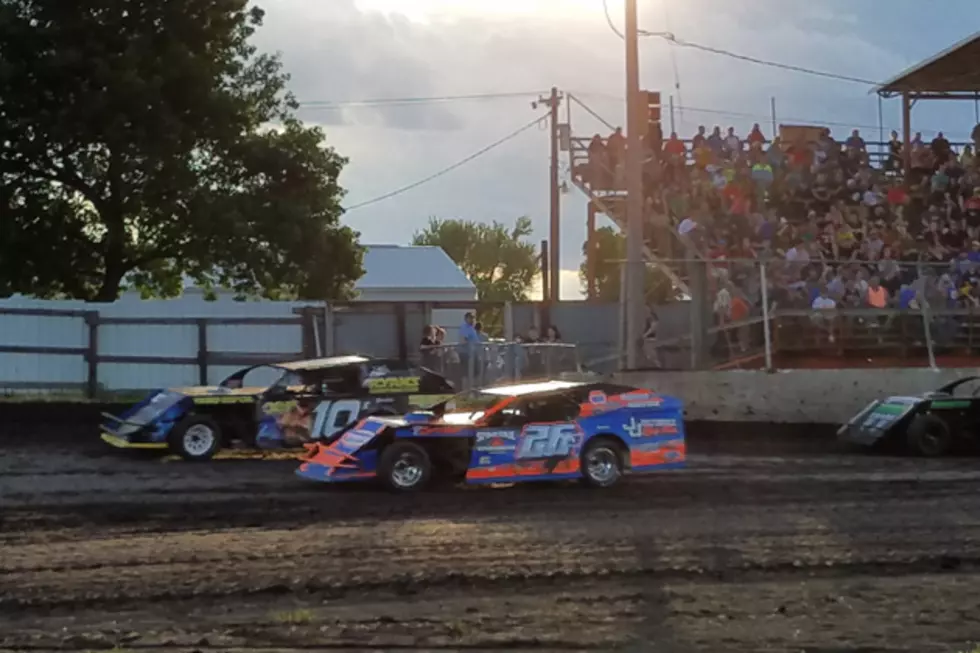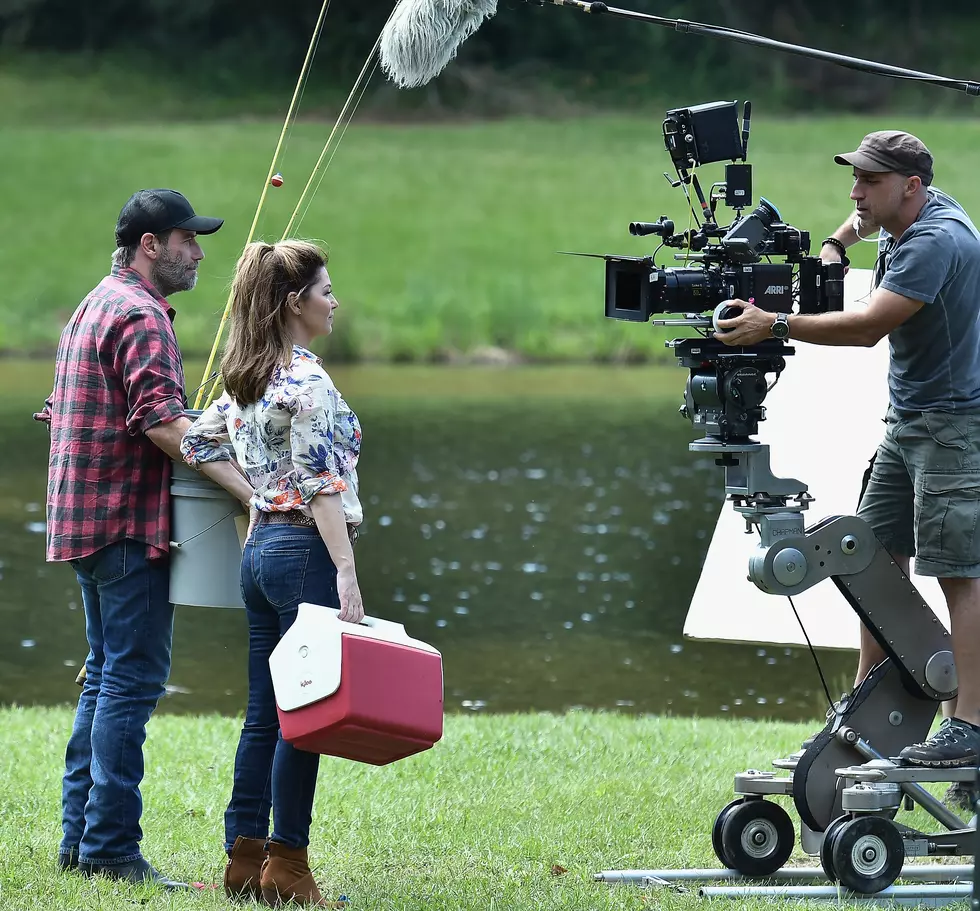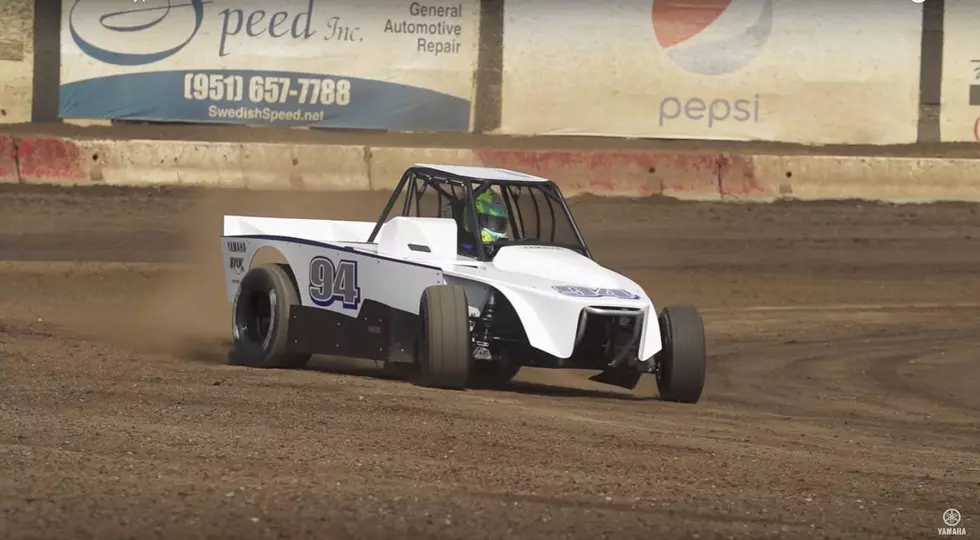
Scoring the Perfect Night at the Race Track
My quest for what makes the perfect night at the race track continues. This time I see if I can 'score' the details from those that track every car on every lap, the scorekeepers.
A few weeks ago, the #IowaDirt track fans had their say. Last week it was the flagman that sounded off. This time we talk to those who I think have the toughest race day duty.
Scoring a race may seem easy. If you have never tried it, this weekend bring a clipboard, a few pieces of papers, and a sturdy writing utensil. When the A-Mains takes the green flag, try and write down the number of every car number as they cross the start/finish line for at least the first five laps. I bet you will have a whole new appreciation for the scorekeepers at your favorite dirt track.
I chatted with three of the premiere scorers who call Iowa home. Even though there were only three of them, I bet there was over 100 years of combined experience at my disposal. So what did a century of experience say made the perfect night at the race track for them?
“A smooth run program,” is what Kevin Feller stated as his number one goal for a perfect night. “Not a lot of cautions, and the program to be completed in about three hours.”
Feller spends most of his year scoring races from February to November. His weekends normally find him at Farley Speedway, West Liberty Raceway, and Dubuque Speedway. He is also a part of the Super Nationals scoring team in Boone and the Duel in the Desert in Las Vegas. And that's just the tip of the iceberg. On average, 110-120 nights are on his calendar annually.
“A perfect night of racing is a result of a combination of numerous aspects all coming together at once,” admitted Kevin Kemp. “I could list them, but you asked for one thing. So, my one thing would have to be great racing. I want to see exciting, side by side racing with numerous position changes and battles until the checker flies.”
Kemp has slowed down his total nights per year at the track recently. He enjoys his Saturday nights now at the Independence Motor Speedway. He has also sat in the tower at Benton County Speedway, 34 Raceway, and half dozen other eastern Iowa tracks.
“A perfect night involves no one complaining at the payout window,” offered Jen Kline. “That typically means that everyone was happy with the way we scored the race. If there are complaints, it can still be a perfect night if those that are complaining are willing to listen rather than just pointing fingers.”
Kline is the head scorer for Southern Iowa Speedway, Bloomfield Speedway, Eldon Raceway, and Scotland County Speedway (MO), but she previously traveled as the head scored for the United States Modified Touring Series, the Hawkeye Dirt Tour, Deery Brothers Summer Series, and several other weekly tracks in the upper Midwest.
A scorekeeper's view of the night is usually limited to only a portion of the track. They focus on turn four, the straight away, and turn one, but mainly the front stretch. That's especially true when a 24-car field strings together a long run of green-flag laps. With that limited area they see get to see, can they tell if a race is entertaining or not?
“I can tell almost everything that happens from the middle of turns three and four to the middle of turns one and two,” stated Fuller. “I have developed great peripheral vision from scoring races as long as I have.”
“Oftentimes my night just becomes a series of numbers which can make seeing the big picture challenging,” Kemp replied when asked if he can tell how the race unfolds with that narrow viewing window. “I always tell people that I never get to 'watch' the races, I just get to see a small portion of the front stretch and that’s all.”
That being said, I think Kemp sees more than he admits there. I've worked with him for the past six or seven years, and he and I will chat in between races about cars that were moving forward, or cars that faded late. He notices that based on how the numbers get scribbled on his lap sheets.
Kline echoed that thought, “I typically only see the cars coming out of turn four and at the start/finish line. However, I still feel as though I see enough of a race to tell how it unfolds. I tend to notice cars that are really coming up from the back of the pack based upon the way I say the car numbers in my head as I write them down.
“All of a sudden I will notice that I'm writing a certain number further up in line,” she added. “I also have to keep an eye on the extremely close battles since I make those calls so I feel that helps me realize how it unfolded.”
As I stated at the beginning, I feel this is the hardest job at any race. It also can be the position that is questioned the most. In my opinion, a lot of that is due to most people it not understanding all of the variables that have to be factored when a caution comes out. This creates a lot of debate, and some times hurt feelings.
Each track, series, or event, may have a different set of parameters then what you would expect or are used to at your regular weekly track. There really isn't any tried and true 'universal rule' that every track/sanction/event in the country follows.
How is a lap scored when a yellow comes out? Does the track go completely back to the previous lap, or do they score the cars that cross the line before the yellow flag, and the rest of the field reverts back to the previous lap.
For example, when I started the Hawkeye Dirt Tour in 2010, I explained it like this during the pre-race drivers meeting, “If the leader crosses the line in a heat race or a B-Main, before the caution is called, we score the lap. During the A-Main, five cars must cross the line before we counted the lap. In all races, all cars that cross the line before the caution is called will be scored for that lap. Any car not crossing the line before the caution is called will be scored based on the previous lap. Please note that the caution is based on the call on the RACEceiver and not the lights or the yellow flag.”
Some tracks/sanctions/events go completely back to the previous lap regardless of how many cars cross. Some only require the leader to cross. Some base the caution period when the light changes from green to yellow. Some when the flag waves. Some via the RACEceiver. Again, there is no universal rule, instead a lot of possibilities.
As ole Pa Doren always told me, “When in doubt ask, but if you ask, be prepared for the answer... even if you don't like what you hear.”
Another big variable is the ever popular, “Where actually is the start finish line?” At some tracks, the scorekeeper and the flagman are not viewing the front stretch from the same spot. When I worked at Benton County Speedway, there was a light pole that was directly across from the scorer, and that became the start finish line, despite it being five feet before the flagstand. When I worked at Highway 3 Raceway in Allison, there was a 150-feet-plus difference between the those two points. That can add to the confusion.
All of that confusion can create friction between drivers/fans and track officials. I personally have no issue having an adult conversation with someone who did not agree with a call, but I do have a problem if they are going to talk to me like I'm five years old, or like I'm a sailor for that matter.
“If there is a question about a call, I appreciate it if a person talks to us in person,” Kline agreed with that thought. “Rather than bashing a track or the employees all over social media, just ask.”
So with all this preserved pressure, how do they remain calm?
“After doing this for so long (almost 40 years) it isn’t really hard to stay calm,” admitted Kemp. “I know what I need to do and how much concentration it requires, so that helps keep me calm.
“I admit there are times I get excited before some of the bigger races,” he went onto say. “But mainly because I’m anxious to see how it all plays out.”
Feller explained his process of staying calm, “I treat every race the same. If you think about how much is on the line in the big races, you put more pressure on yourself. I try to stay cool and calm during the entire night.”
“Knowing the looks of each car definitely helps,” Kline was quick to point out. “ I tend to just learn the cars and memorize things about them. Typically, after two or three laps, I can tell you the number on a car after seeing the nose of it coming out of turn four.
“I also like to get to know the drivers and their crews,” she went on to say “I feel like once I know the driver, I tend to remember their car and number better.”
“Working with a group of great officials helps produce a calming effect too,” Kemp added.
'Lady Luck' plays a big role in the outcome of a race. It can also be a factor in how someone gets hooked into this sport. I guess it's only fair that way, right?
Kline gives all the credit to her mother for teaching her how to score a race. She scored at their local tracks in Minnesota. Then her mom worked with the USMTS.
“I would go with her and just mess around writing down the car numbers.” Kline remembered. “One weekend, my mom couldn't make it to a race in Winston, Missouri but I went with Staley's anyway. When we got there, Janet (Staley) asked if I felt like I could score that night. I told her I would try. At that point, I had no choice but to score the 24 car field.”
After that challenge and a successful weekend, she was hooked.
“Growing up I went to the races with my father (Larry Kemp),” Kemp shared. “Oskaloosa, West Liberty, Hawkeye Downs, Tunis, Davenport and countless other tracks he scored at. Ironically, I was too young to go to the pits, but I knew what his job was.”
Things changed when his parents began running 34 Raceway. They hired JoAnn Welch to score at the West Burlington raceway.
“I worked in the tower to help with realigns,” Kemp continued the trip down memory lane. “So I began scoring races as a way to stay busy, and to see if I could do it. JoAnn would give me tips and answer my questions. She was a very patient teacher.
“Over time, and through the course of the family business, I just continued on and developed my own system for doing what I do.”
“My big mouth as a youngster got me started in scoring,” Fuller admitted. “When (my) dad announced at Cedar Rapids, Darrell Dake took my idol Ed Sanger out one night. From that moment on, when dad announced Dake's name, I would stand up and yell, 'Dakes a Snake'. The locals in Cedar Rapids didn't care if I was a kid. They wanted to kill me. My dad found out, and he took me to the infield for my safety.
“Because I was only 11, I drove him nuts with questions,” Fuller continued. “He told me to sit down and try to do what John Crossen (the head scorer) was doing, since he was my favorite official. I caught on, and thanks to John's mentoring, it's been history ever since.”
A good scorekeeper is hard to find, so if your track is lucky enough to have one, please take a moment one weekend to thank them for their efforts.
If you have a desire to become a track official and you really would like to have longevity as a track employee, make sure you get plenty of practice with that clipboard. And bring a few back-up writing instruments. If you get any good at it, you'll be employed for as long as you want to work.
Think skin not included.
More From K92.3









